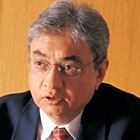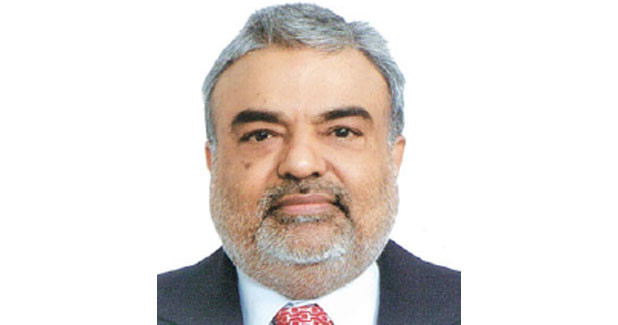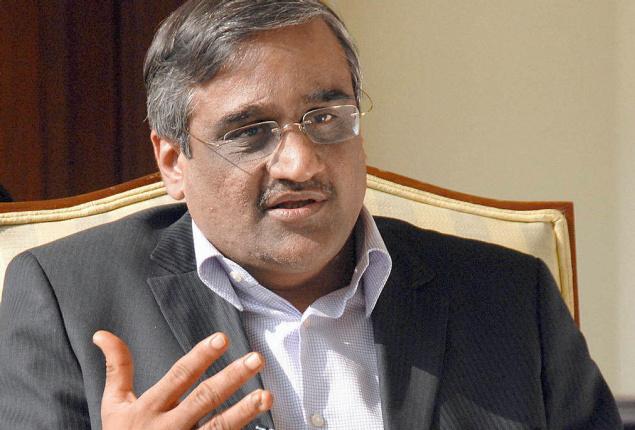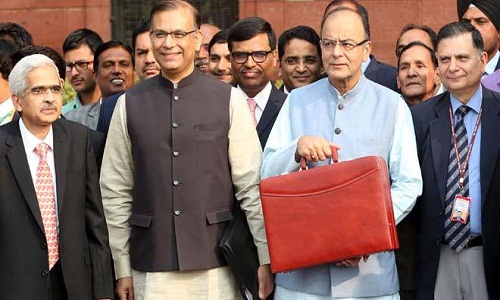FW
India has the largest area under cotton cultivation in the world, covering 12.7 million hectares of cultivated land, which constitute about 37 per cent of the total area under cotton in the world. The country is currently the world’s second largest exporter. However, it’s estimated that cotton production in India will fall by over seven per cent for the October 2015-September 2016 crop year.
This year, India will produce about three million bales less than last year. India will produce 35.3 million bales this year. A striking point is that this season India has an opening stock of 7.36 million bales as against 5.39 million bales in the last season that began in October of 2014. This year, as mill consumption is expected to remain at the same level, less production this year will somewhat offset the excess opening stock. Despite a drop in production, cotton prices have been in a bear grip owing to higher carryover stocks. Indian cotton prices, since the beginning of 2016, have fallen three per cent compared with over nine per cent correction in international prices. Prices in India are finding support on the back of rising exports.
Cotton prices in the international market have also crashed to a level not seen since August 2009. The fall is due to widespread fears that China, which has been a net big importer, will soon start selling cotton from reserves, depressing prices the world over.
India has already exported about 40 lakh bales of cotton so far this year, of which 20 lakh bales were shipped to Pakistan. Pakistan is buying more cotton than expected from India after floods cut its own crop to the smallest in over a decade. Cotton production in the next season (October 2016 to September 2017) may see an uptick and could reach about 38 million bales. The market will also see an uptick in the next season with price expected to be about Rs 34,000 to Rs 35,000 per candy.
India’s denim industry is growing at a compound annual growth rate of 15 to 18 per cent. Currently, feasible production capacity in India is a billion meters per annum considering a 85 to 90 per cent utilisation. Looking at the domestic demand, India will need to double its denim capacity in the next four to five years. India is one of the largest producers of denim. The Indian denim industry should ensure it bags orders not just for the domestic market but also that it becomes a global hub for branded denim apparel.
The industry is looking to increase its share of exports from the current 35 per cent to 45 per cent. Historically, denim has been one of the fastest growing apparel fabric segments, having grown by 500 million meters from 700 million meters in 2010 to 1.2 billion meters in 2015. Yet, there is a gap of another 300 million meters in India if the denim industry needs to tap its full export potential.
Gujarat is set to strengthen its position further as the denim hub of India with around 150 million meters per annum new manufacturing capacity added by 2020. This will be in addition to the existing capacity of 500 million meters per annum.
Apparel Sourcing Show will be held in Canada from August 22 to 24, 2016. The show will allow Canada to have better trade platform for the apparel industry and find better ways to source its products. Canada’s retailers will be able to connect with major apparel and textile manufacturers from around the world. Many countries will be represented, including, of course, China, as well as Bangladesh, Mexico, the United States, India, Vietnam, Taiwan, Indonesia, Mauritius, Guatemala, Colombia, Jordan, Honduras, Myanmar, Burma, and Peru.
The expo will feature international textile producers, and offer a series of seminars on trade and textiles, from the Trans-Pacific Partnership to how to choose the best overseas producers to work with. Established over 150 years ago, in small, urban communities that offered a stable labor supply and rivers ideally suited for water-generated power and dyeing or finishing processes, the Canadian textile industry started with the manufacture of yarns and fabrics from natural fibers.
The industry is heavily capital-intensive, uses natural, artificial and manmade fibers and filaments, and supplies a wide range of value-added products to over 150 consumer, household and industrial customers in Canada and worldwide. Canada imports nine times more per capita in textiles compared to the US and three times as much as the EU.
"The Union Budget 2016-17 presented by finance minister Arun Jaitley yesterday was received well by many in the textiles industry. However, a section especially apparel makers are an unhappy lot. Reason: the Union Budget has proposed to bring in high-end readymade garments under excise duty net. A levy 2 per cent excise duty on branded readymade garments and made-up articles of textiles of retail sale price of Rs 1,000 or more would be levied."

The Union Budget 2016-17 presented by finance minister Arun Jaitley yesterday was received well by many in the textiles industry. However, a section especially apparel makers are an unhappy lot. Reason: the Union Budget has proposed to bring in high-end readymade garments under excise duty net. A levy 2 per cent excise duty on branded readymade garments and made-up articles of textiles of retail sale price of Rs 1,000 or more would be levied. However, this duty will be applicable only for those manufacturers who do not claim input tax credit (ITC) popularly known as central value added tax (Cenvat) paid on various raw materials. Manufacturers who claim ITC, however, will need to pay 12.5 per cent excise duty. Until now, excise duty was “nil” on manufactures without ITC claim and 6-12.5 per cent for those who claimed ITC.
Apparel makers not happy with move
Rahul Mehta, President, Clothing Manufacturers’ Association of India (CMAI) opines, the move is disastrous for the textiles industry. At a time when the government is talking about implementation of Goods and Services Tax (GST), what is the need of bringing in a new levy, especially, when the textiles industry is passing through a rough phase, he asked. “It is also crucial to note that the current period was seeing a lot of exporters, hoping to offset their slow down in global markets, making an entry in the domestic sector. Their efforts would again hit a roadblock,” Mehta opines.
By contrast, however, basic customs duty on specified fibers and yarns was proposed to be reduced to 2.5 per cent from the existing 5 per cent. R K Dalmia, Chairman, Texprocil, welcomed the move. Meanwhile, basic customs duty on import of specified fabrics (for manufacture of textile garments for export) of value equivalent to 1per cent of FOB value of exports in the preceding financial year being exempted subject to the specified conditions.

“Prices of readymade garments will go up in the range of 2 to 5 per cent depending upon the retail price of the product,” avers Ajit Lakra, Head Textile, Federation of Industry and Commercial Organisation. We strongly condemn this move of the Finance Minister as it will hurt small and medium size industries which are manufacturing garments for big brands, says Lakra, a Ludhiana-based garment maker said. Echoing similar views, Sandeep Jain, Executive Director, Monte Carlo Fashion also said the levy of excise duty as ‘negative move’ for the garment industry.
Job creation in focus
Meanwhile, the Confederation of Indian Textile Industry (CITI) has welcomed the Union Budget, saying it focuses on employment opportunities and skill, which makes textile industry a significant contributor to job provider and supporting skill development jointly with NSDC. In a statement, it said the textile industry welcomes the new initiatives for job creation where the government will absorb 8.33 per cent of EPF amount for a period of the years for incremental workers who are on the rolls of company. Naishadh Parikh, Chairman, CITI said, “Reduction in customs duty from 5 per cent to 2.5 per cent on specified fibers and yarns is a welcome step and should succeed in reduction in the cost of such fibers and yarns for spinners and weavers.”

Kishor Biyani, Chairman Future Group views the Budget purely from the lens of consumption. “To me consumption equals to development and from that point of view this budget is a mixed bag of announcements for me. I believe the government's intention was quite positive but it had to walk on a tightrope, juggling between social and economic reforms at the same time.” Sanjay Kapoor, MD of Genesis Luxury, which has a mix of joint venture and marketing and distribution arrangements with brands such as Burberry, Canali, Jimmy Choo, and Giorgio Armani feels that in a scenario where the consumer sentiment is already low, this could spell lower purchases in India for luxury goods and services.
According to Krish Iyer, President and CEO, Walmart, the government's proposal to create e-market for farmers through 'Unified Agri Marketing platform' is very bold and forward looking and will positively impact country's farmers. “We will continue to strengthen our Direct Farm programme to complement government vision to make a difference to the lives of our millions of farmers.” Responding to the Budget, Animesh Saxena, MD of Neetee Clothing said, the announcement of increase in excise duty on branded clothes is not going to benefit the MSMEs much as people who buy branded clothes would still continue to buy it and not shift to the local garments.
"In the Union Budget 2016-17, presented yesterday by the finance minister Arun Jaitley, he has proposed a reduction in basic customs duty on specified textiles, including fibers, yarns and fabrics. The minister proposed a cut in basic customs duty on specified fibers and yarns from the existing five per cent to 2.5 per cent. This will benefit both importers and exporters of these fibers and yarns."

In the Union Budget 2016-17, presented yesterday by the finance minister Arun Jaitley, he has proposed a reduction in basic customs duty on specified textiles, including fibers, yarns and fabrics. The minister proposed a cut in basic customs duty on specified fibers and yarns from the existing five per cent to 2.5 per cent. This will benefit both importers and exporters of these fibers and yarns.
Basic customs duty on import of specified fabrics (for manufacture of textile garments for export) of value equivalent to one per cent of FOB value of exports in the preceding financial year has been exempted subject to the specified conditions. The FM also proposed that tariff value for calculating excise/CVD on readymade garments and made up articles of textiles to be calculated at 60 per cent of retail sale price instead of the existing 30 per cent of retail sale price.

The Budget proposes to increase excise duty on branded readymade garments and made up articles of textiles of retail sale price of Rs 1,000 or more from nil to 2 per cent (without CENVAT credit) or from 6 per cent/12.5 per cent to 12.5 per cent (with CENVAT credit). Similarly, excise duty on PSF/PFY, manufactured from plastic scrap or plastic waste including waste PET bottles, is proposed to be hiked from 6 per cent to 12.5 per cent (with CENVAT credit), while keeping it unchanged at 2 per cent without CENVAT credit.
Meanwhile, TEA has welcome the Budget as President A Sakthivel has said the Budget has addressed the demands made by the Association. In his statement, the TEA chief also welcomed the nine pillars of the Union Budget: Agriculture and farmers' welfare, rural sector, social sector including healthcare, education, skills and job creation, infrastructure, financial sector reforms, ease of doing business, fiscal discipline, tax reforms to reduce compliance burden.
Sakthivel while describing the Union Budget as positive said that the focus of infrastructure and initiatives for ‘Ease of Doing Business’ will go a long way in improving the economy as well as reducing the transaction cost. However he expressed his concern on the proposal of excise duty on branded readymade garments and made up articles of textiles with the retail sale price of more than Rs 1,000. This will adversely affect the industry and will also be difficult to administer, he said.
The TEA president complimented the FM for allocating Rs 3,350 crores for Textile Industry which includes Rs 140 crores for amended TUF and Rs 300 crores for Development of Mega Cluster. Sakthivel welcomed the reduction of basic customs duty on specified fibers and yarn from 5 per cent to 2.5 per cent and also he said basic customs duty on import of specified fabrics (for manufacture of textile garments for export) of value equivalent to 1 per cent of FOB value of exports in the preceding financial year being exempted subject to the specified condition.
Panorama Berlin will be held from January 16 to 18, 2018. This is a service provider and an industry hub and will feature trends for fall/winter and more than 800 exhibitors. Last season, the show attracted nearly 50,000 visitors from 96 countries, and hosted more than 700 brands.
The upcoming edition will have a new hall structure, expanded lifestyle areas and new community areas. The layout makes it easier for buyers to navigate across the offering, with dedicated areas for men and women’s which blend seamlessly with each other from casual wear to formal wear, and from classic to progressive. Accessories, footwear, denim and street wear will also be presented.
There will be a new platform for sustainable fashion alongside a plus-size fashion area. The event will feature several lifestyle areas, which will bring a sense of being at a modern department store. Products and gadgets specially selected for the respective target groups will be presented in these lifestyle spaces.
Returning brands include Marc Cain, Oui, Vagabond, Fila, Chiemsee, Guess, Miss Sixty, Bench, Desigual and Jack & Jones. New exhibitors include Sandara, Codello, Adax, Norton, My Jewellery, Zoey, Chasin and Paddock’s Jeans. The exhibition space will cover 45,000 sq mt across 11 halls.
Leading textile player T.T. celebrated the completion of 25 years of public listing recently at the Bombay Stock Exchange.
During the occasion, the company’s management announced their plans to launch a premium innerwear brand in the near future as part of their new strategy to move towards the fashion side of the fiber to fashion spectrum. This move will help enhance margins and build the brand equity of the company. The company has enhanced their knitwear range to become a garment company from an innerwear company.
Dr R C Jain, Chairman and Founder of T. T Group explained the journey of the company and its evolution as a fiber to fashion company as it spread its wings not only across India but also across 65 countries. Brand T. T., under which all products are sold, has become a well known brand with registrations in India and many other nations. He paid special emphasis on the principles of the company and its employees who have been the two important pillars on which the Company laid its foundation and grew.
Sanjay Jain, managing director laid down the vision and roadmap of the Company with clarity and crispness. Incidentally, T. T. Group has to its credit many firsts in the industry, one of which is that it was the first garment company to get listed on a stock exchange in 1990.
Ginners in Pakistan want a ban on import of cotton and cotton yarn from India till the end of the cotton season and disposal of one million bales lying in ginneries as unsold stock. They want a bailout package. They also insist that regulatory duty, sales tax and customs duty on imports of cotton should not be waived and that these duties are essential for the survival of local farmers as well as ginners.
Their argument is that if duties are waived, that would be detrimental to local growers and ginners who have millions of bales lying in unsold stock. Ginners also want textile mills to clear their outstanding dues as early as possible. They want a national cotton policy to be formulated which would cover all aspects of the cotton trade, including fixing the support price and targets of production. The electricity tariff is another issue that bothers them.
Farmers in Pakistan say the textile sector is purchasing local cotton from them at throwaway rates but on the other hand importing cotton or yarn from countries like India at higher rates, which amounts to a great injustice. Pakistan has a target of reaching 20 million bales of cotton this season.
According to the International Cotton Association (ICA) leaders, in view of growing consumption of cotton in Bangladesh, the platform wants to provide a wide range of mediation and training support for trade associations and individual mills to ensure safe trading under ICA bylaws.
ICA officials say that the future of textile industry in Bangladesh is bright and the ICA is in Bangladesh to strengthen the bonds between the association and Bangladeshi spinning and textile sectors as the country is now the second largest cotton importer.
The ICA has training programs in Liverpool and they have visited Bangladesh several times and done training programs so that parties could know what are right and about the obligations. Rules are very important aspect here in Bangladesh because 100 per cent of cotton which is bought in Bangladesh is contracted under the ICA bylaws and rules, so the parties should better know under which rules and bylaws they buy a product.
ICA plays a vital role for Bangladesh textile sector and cotton worth over $2 billion is being imported to Bangladesh under ICA rules and bylaws. Bangladesh imports about four million bales of cotton per year.
Sources say, the Indian cloth industry reported a modest increase in revenues in the December 2015 quarter. Net sales of the industry grew by 2.4 per cent y-o-y during the period. The sluggish growth was attributed to a poor sales performance of a few large companies in the industry.
Out of the 54 company’s sample, 29 reported an increase in revenues. Net sales of 23 companies declined, while two companies failed to generate any sales. Aggregate net sales of the top 10 companies (accounting for three-fourth of the industry’s total sales) grew by 10.8 per cent. Raw material expenses of the industry dropped by 15.8 per cent in the December 2015 quarter.
Moreover, the industry liquidated inventory worth Rs.393.8 million during the quarter under review as compared to a pile-up of Rs.5.1 billion in the year-ago quarter. After adjusting for change-in-stock, operating expenses of the industry increased by 1.2 per cent. Nevertheless, this was still slower than the growth in sales. Consequently, operating profit of the industry increased by 12.3 per cent in the December 2015 quarter. Operating margin expanded by 110 basis points to 11.8 per cent.
On the post-operating front, interest expenses of the industry grew by 1.8 per cent and depreciation charges by 3.3 per cent, slower than the growth in operating profit. Resultantly, the industry reported a net profit worth to 0.2 per cent of the total income in the December 2015 quarter. The industry had reported losses equivalent to 0.1 per cent in the year-ago quarter.












